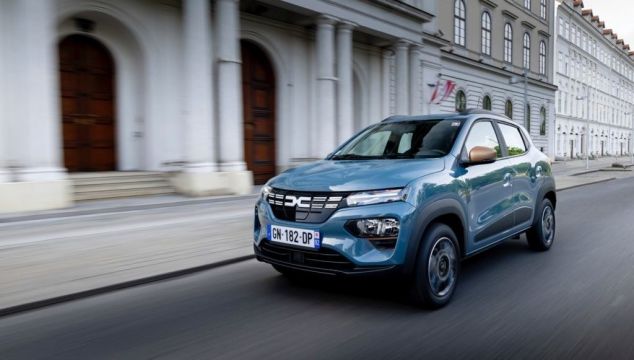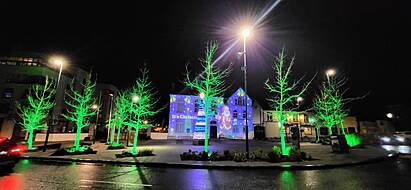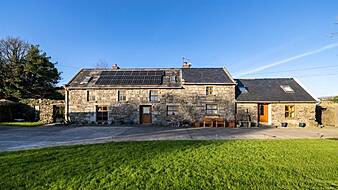Dacia has officially confirmed — after many unofficial confirmations — that its Spring electric car will come to Ireland, with sales starting in 2024.
The Spring has been on sale in European markets since 2021, with prices as low as €12,000 depending on the local government incentives for EV purchases, making it the cheapest electric car you can buy, aside from speed-limited quadricycles such as the Citroën Ami. There has been no official confirmation of an Irish price as yet, but it seems likely that when it arrives, the Spring will be the most affordable EV here.
Patrick Magee, head of Renault and Dacia in Ireland, said: “We are delighted that Dacia Spring will come to Ireland in 2024. It fills a niche in the Irish electric car market for a highly usable, quality EV that won’t break the bank and which makes electric vehicle ownership more realistic than ever. With over 120,000 customers already sold on the Spring’s unbeatable, ‘no-nonsense’ blend of value, efficiency and durability, Irish car buyers can look forward to an EV that’s perfectly aligned to their mobility requirements and, importantly, is done the Dacia way.”
The Spring that Ireland will get is not the Spring that’s currently on sale. That car uses a 27.4kWh battery for a range of 305km, and has a mere 44hp from its front-mounted electric motor. The 0-100km/h time is a full 19 seconds.
For 2024, the Spring will be getting a major update, with new styling on the outside and very likely a refreshed interior too. Will it get a new motor and batteries? Well, there’s some debate on that score. There have been rumours that Dacia is going to use the outgoing Renault Zoe EV’s electric car platform for a future electric model, now that the Zoe itself is about to be replaced by the new Renault 5 EV. That could create a compact, affordable model with a potential range of 400km.
However, it seems more likely that the Spring will stick with its existing small battery and low-powered motor, simply because according to Dacia’s chief executive, Denis Le Vot, the people who drive a Spring don’t need any more. In fact, they could get away with less…
“If I could cut the battery of the Spring in half, I would” Le Vot said. “It’s a commuter car, and that’s how people use it. We know, because it’s a connected car, that owners drive on average just 31km per day. So that’s 270km of battery that they don’t really need. They usually go a week, a full week, without charging up the car. So this battery is too big. When we launched it, and it had 27kWh, everyone said ‘this is too small.’ But when you see the way people use it, if we could — and it wouldn’t technically work, of course — but I would cut it in half.”
The Spring has been a success for Dacia in Europe, with more than 120,000 sold so far. Xavier Martinet, Dacia’s head of sales said: “Dacia is thriving in Ireland and it’s a growth market for us, so we are delighted to strengthen our range with the Dacia Spring. With Irish sales surging year-on-year and many car buyers having a recognised appetite for our brand, it is now the right time to introduce a pure electric vehicle. Spring has democratised electric vehicle ownership in Europe, offering people the chance to enjoy sustainable driving without the often-associated price premium. I’m confident that Spring will be as popular in Ireland as it has proved throughout the rest of Europe.”
At the other end of things, Dacia is for the first time ever (unless you count privateer entries in the European Ice Racing series) getting into motorsports. Le Vot confirmed this week that a works Dacia team will be taking on the gruelling cross-desert Dakar Rally, starting in 2025. And it’s going to be doing it with carbon-neutral fuel.
“Dacia and Dakar are a perfect match! Not only is this a test of Dacia's true robustness, it is a showing of our commitment to low-carbon mobility. We are very excited to take part in Dakar with synthetic fuel technology. Dacia, alongside the best team and drivers in the game, are serious contenders for the rally” said Le Vot.
Dacia hasn’t announced what car it will be using yet, and whether it will be based on a production model (which would make the new 2024 Duster or the 2025 Bigster the most likely candidates) or if it will be a purpose-built ‘buggy’ with a road-car silhouette body (which is how Mini recently entered the Dakar).
Dacia has partnered with legendary British racing team Prodrive — of Subaru rally and Aston Martin Le Mans fame — to run the programme, and has said that quite aside from chasing the glory of a win, Dacia wants to use the programme as a rolling laboratory to try new ideas out, which could filter through to production models.
Dacia isn’t doing things by halves when it comes to drivers, either — it’s signed up nine-times World Rally champion Sebastian Loeb to drive the car, co-driven by Spain’s Cristina Gutierrez Herrero.







